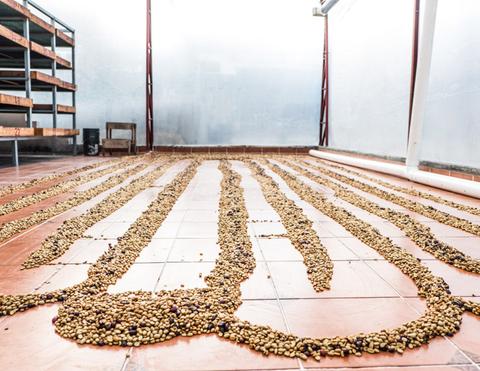Characteristics of growing Environment of Coffee Bean Mountain Spring processing method Sidamo Fakui Coffee in Ethiopia
The quality of Qianjie Huakui coffee beans has always been excellent.

The boutique coffee was harvested near the city of Hambella in the Guji region of Ethiopia. The area is more than 2000 meters above sea level. Few plantations are located at this altitude, which is why this naturally processed coffee has a rich fruity flavor and a sweet return of sugar. Qianjie Huakui is from the mountain spring treatment plant, the producer is located near the washing station of small farmers, the species is the original species.
The city of Hambella is located at an altitude of 2320 meters, particularly high above, until a few years ago, when it was too cold to grow coffee. The new plantations produce young, healthy, slow-growing trees that produce high-quality coffee. 315 hectares are scattered over the area, and they are much larger than the average plantation in Ethiopia. There is more reason for farmers to look for financing to train and invest in more leverage and convenience in negotiations to continuously improve the quality of their crops.
Goro is one of seven washing stations for coffee exporter Buno General Trading and is managed by Abiyot. In order to obtain the highest possible quality specialties, he chose producers who provide the best plots that are most beneficial to large plantations (8 to 15 hectares) because it is easier to improve harvesting methods and the quality of coffee in these plantations. In addition, in the medium to long term, the policy allows you to create micro batches for each individual plantation, further improving the traceability and storytelling of coffee.
The washing station only uses natural processes to process coffee, and Abiyot uses different drying methods to experiment to get the best results for each batch.

Due to cool climatic conditions, cherries ripen slowly, so that the sugar in the fruit is fully developed. When the cherries are ripe, they are picked by hand by selective picking and taken to the cleaning station, where the floating technology is used for cleaning and selection. They are then placed on an elevated bed, where they dry slowly for up to 40 days. Even if it is dry, it takes too long compared with Ethiopian standards, because the climate at this altitude is colder and requires more dry days. The process is continuously monitored, with special attention to the use of sheets to protect grains during the hours when the sun is most exposed. At these elevations, the sun is particularly strong and may damage the coffee fruit.
Important Notice :
前街咖啡 FrontStreet Coffee has moved to new addredd:
FrontStreet Coffee Address: 315,Donghua East Road,GuangZhou
Tel:020 38364473
- Prev

Introduction of anaerobic fermentation Coffee Bean Flavor Coffee washing Station of Ethiopian native species WushWush
Wush Wush, which originated in the small town of Wush Wush in the Ethiopia-Cafa Forest, was introduced to a small boutique coffee farm in Colombia 30 years ago. Wush Wush, like Geisha, is a native species from Ethiopia. The difference is that Wush Wush did not shine until it was brought to Colombia, with a flavor and level no less than that of high-end Rosa Coffee.
- Next

Which would you like to have latte beans? What's so unique about the coffee beans that must be deep-roasted with concentrated coffee?
With the advent of products such as single-origin and full-baked products, buying espresso beans is actually more complicated than in the past. Now Qianjie will tell you what you want to know about espresso beans. What's so unique about espresso beans? Most cafes use blended beans to make espresso, not just regular coffee, for several reasons:
Related
- Detailed explanation of Jadeite planting Land in Panamanian Jadeite Manor introduction to the grading system of Jadeite competitive bidding, Red bid, Green bid and Rose Summer
- Story of Coffee planting in Brenka region of Costa Rica Stonehenge Manor anaerobic heavy honey treatment of flavor mouth
- What's on the barrel of Blue Mountain Coffee beans?
- Can American coffee also pull flowers? How to use hot American style to pull out a good-looking pattern?
- Can you make a cold extract with coffee beans? What is the right proportion for cold-extracted coffee formula?
- Indonesian PWN Gold Mandrine Coffee Origin Features Flavor How to Chong? Mandolin coffee is American.
- A brief introduction to the flavor characteristics of Brazilian yellow bourbon coffee beans
- What is the effect of different water quality on the flavor of cold-extracted coffee? What kind of water is best for brewing coffee?
- Why do you think of Rose Summer whenever you mention Panamanian coffee?
- Introduction to the characteristics of authentic blue mountain coffee bean producing areas? What is the CIB Coffee Authority in Jamaica?

